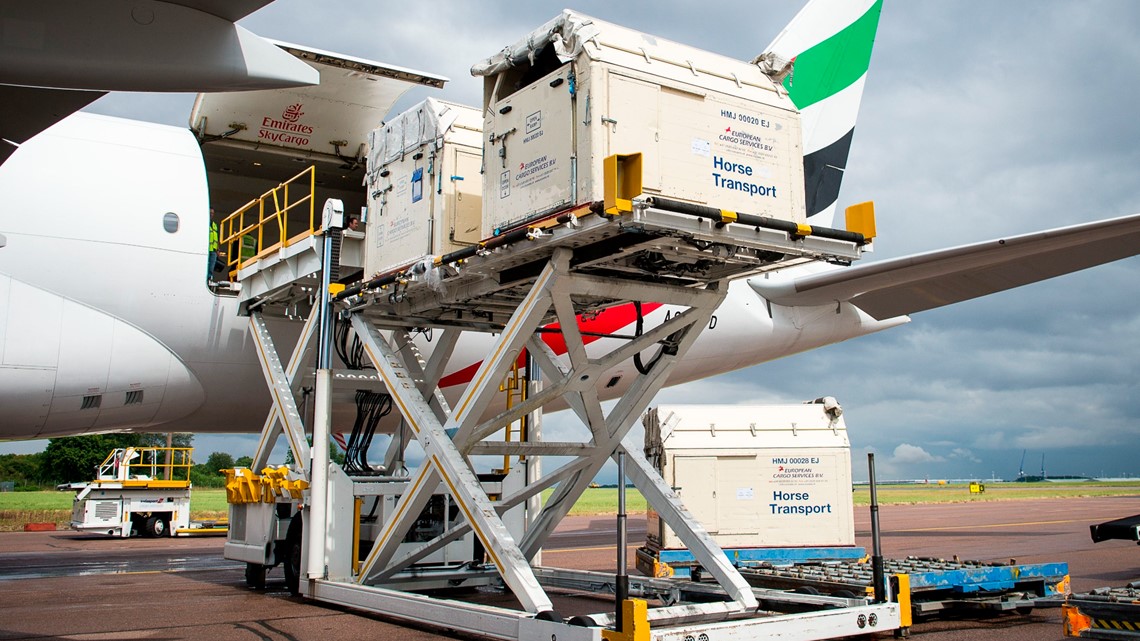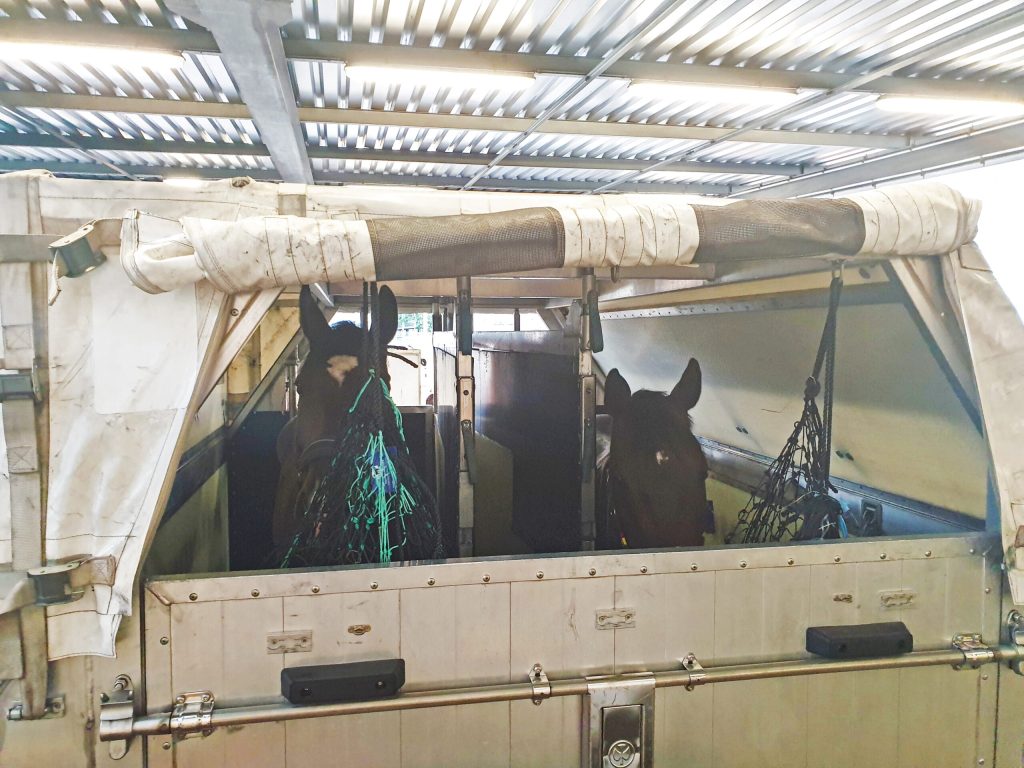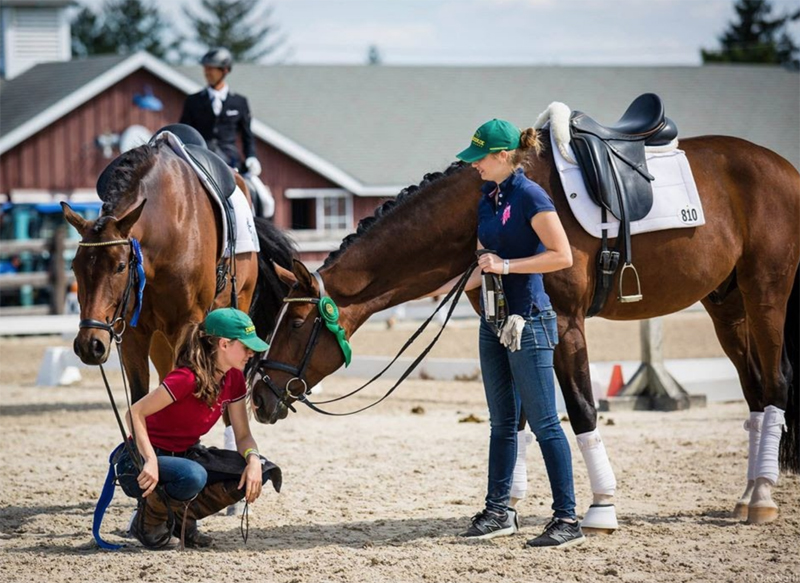Equestrian horses undergo a rigorous process to compete in the Olympics. They travel from various parts of the world to showcase their skills.
Getting a horse to the Olympics involves detailed planning and care. These horses must qualify through various competitions. They are then selected based on their performance and health. The journey includes vet checks, strict quarantine measures, and specialized transport. Horses fly in specially designed aircraft, ensuring comfort and safety.
The process is meticulous to protect these valuable athletes. Owners, trainers, and veterinarians work together to ensure everything goes smoothly. Each step is crucial to maintaining the horse’s well-being. Join us as we explore the fascinating journey of equestrian horses to the grand stage of the Olympics.

Credit: www.radiotimes.com
Selection Process
The journey of equestrian horses to the Olympics is a meticulous process. It begins with careful selection. This ensures only the best horses represent their countries. The selection process involves various stages. Let’s delve into these stages in detail.
Criteria For Choosing Horses
Choosing a horse for the Olympics involves strict criteria. Here are some key factors:
- Physical Fitness: The horse must be in peak physical condition.
- Temperament: Calm and composed horses perform better under pressure.
- Training Level: Horses must have advanced training in their discipline.
- Past Performance: Horses with proven track records are preferred.
Role Of Riders And Trainers
Riders and trainers play a crucial role in the selection process. They ensure the horse meets all criteria. Their responsibilities include:
- Regular Training: Consistent and rigorous training schedules.
- Monitoring Health: Keeping track of the horse’s health and well-being.
- Building Bond: Establishing a strong bond with the horse.
- Performance Assessment: Evaluating performance in competitions.
Riders and trainers work together to prepare the horse. Their collaboration is vital. It ensures the horse is ready for the Olympics.
Training Regimens
Preparing equestrian horses for the Olympics involves intense training regimens. These regimens ensure the horses are in peak physical condition. Each regimen includes daily exercise routines and specialized diet plans. These elements are crucial for building strength, stamina, and focus in the horses.
Daily Exercise Routines
Olympic equestrian horses follow strict daily exercise routines. These routines vary to build different muscle groups and skills.
- Morning: Warm-up exercises to prevent injuries.
- Midday: Intense training sessions for agility and speed.
- Afternoon: Cool-down walks to relax muscles.
Training also includes obstacle courses. These courses help improve the horse’s coordination and response time. Regular practice on these courses is vital for competition readiness.
Specialized Diet Plans
A well-balanced diet is essential for an Olympic horse’s health. Specialized diet plans are designed to meet each horse’s needs.
| Meal | Components | Benefits |
|---|---|---|
| Breakfast | High-fiber grains | Provides sustained energy |
| Lunch | Protein-rich feed | Supports muscle growth |
| Dinner | Mixed greens and vitamins | Boosts immunity and digestion |
Hydration is also critical. Horses drink large amounts of water daily. This helps maintain their energy levels and overall health.
Health And Veterinary Care
Ensuring the health and well-being of equestrian horses headed to the Olympics is paramount. The rigorous journey requires comprehensive health and veterinary care. This care ensures the horses are in peak condition. Let’s explore the essential aspects of their care.
Routine Check-ups
Routine check-ups are vital for Olympic horses. Veterinarians conduct regular examinations. They check vital signs and overall health. Blood tests and X-rays might be used. These tests detect any underlying issues early.
- Blood tests
- X-rays
- Vital sign checks
Regular dental check-ups are also important. Poor dental health can affect performance. Vets clean and examine the horse’s teeth. They ensure there are no infections or abnormalities.
Injury Prevention And Management
Injury prevention is crucial for Olympic horses. Vets and trainers work together. They implement strategies to avoid injuries. Proper training routines and warm-ups are essential. They help prevent muscle strains and sprains.
| Prevention Strategy | Benefit |
|---|---|
| Proper Warm-ups | Reduces muscle strains |
| Balanced Diet | Boosts immunity |
| Regular Exercise | Strengthens muscles |
In case of an injury, prompt management is key. Immediate treatment prevents further complications. Ice packs and bandages might be used. Rest and rehabilitation follow to ensure full recovery.
- Immediate treatment with ice packs
- Application of bandages
- Rest and rehabilitation
Consistent monitoring of the horse’s recovery is essential. Vets check progress frequently. They adjust treatments as needed to ensure optimal healing.

Credit: www.tiktok.com
Travel Preparations
Getting equestrian horses to the Olympics involves meticulous travel preparations. These athletes need special care and attention. Each step ensures their safety and well-being. The journey requires detailed planning and precise execution.
Documentation And Permits
Equestrian horses need specific documentation and permits for international travel. This includes:
- Passport
- Health certificates
- Vaccination records
- Import/export permits
These documents ensure the horses are healthy and meet entry requirements. Each country has its own regulations. It is crucial to check these ahead of time. Compliance helps avoid delays and complications.
Packing Essentials For Horses
Packing for equestrian horses involves special equipment. Here are some packing essentials:
| Item | Purpose |
|---|---|
| Feed and water | Nutrition and hydration |
| Bedding | Comfort and rest |
| First-aid kit | Emergency care |
| Protective gear | Safety during transit |
Ensuring these items are packed helps maintain the horse’s comfort. Proper planning reduces stress and ensures a smooth journey. The well-being of these elite athletes is paramount.
Transportation Methods
Transporting equestrian horses to the Olympics involves meticulous planning and coordination. These majestic animals travel across the globe to compete on the world stage. The journey must ensure their safety, comfort, and health. Let’s explore the transportation methods used to get these horses to the Olympics.
Air Travel Arrangements
Air travel is the primary mode of transport for Olympic horses. Special cargo planes designed for animals are used. Horses travel in customized stalls within these planes. Each stall offers ample space for the horse to stand and move slightly. Air travel ensures the quickest and safest way to cover long distances. Professional grooms and veterinarians accompany the horses during the flight. They monitor the horses’ well-being throughout the journey. In-flight meals and hydration are carefully managed to keep the horses comfortable.
Ground Transport Logistics
Ground transport plays a crucial role before and after flights. Horses are transported from their stables to the airport using specialized horse trailers. These trailers are designed to provide a smooth and stable ride. The trailers are equipped with cushioning and ventilation systems. After landing, horses are again transported by road to their final destination. Every detail, from loading to unloading, is handled with extreme care. The logistics team ensures that the horses experience minimal stress during ground travel.

Credit: www.king5.com
Quarantine Procedures
Quarantine procedures ensure the health and safety of equestrian horses traveling to the Olympics. Horses undergo strict quarantine measures to prevent disease spread. These procedures include pre-departure and arrival protocols.
Pre-departure Quarantine
Before departing, horses enter a designated quarantine facility. This period lasts several weeks. During this time, veterinarians conduct health checks. They monitor for infectious diseases. Any horse showing symptoms is isolated. This step ensures only healthy horses travel. It reduces the risk of disease transmission.
Arrival Quarantine Protocols
Upon arrival, horses enter another quarantine phase. This phase also involves health monitoring. Veterinarians perform thorough examinations. They check for any signs of illness. The horses stay in a controlled environment. This helps prevent contact with other animals. It ensures the horses are free from diseases.
Acclimatization
Acclimatization is crucial for equestrian horses heading to the Olympics. It ensures they adjust to new environments and perform their best. This process involves getting used to new climates, different altitudes, and unfamiliar venues. Let’s explore how these magnificent animals get ready for the big event.
Adjusting To New Climates
Horses need time to adjust to new climates. Changes in temperature, humidity, and air quality can affect their performance. Trainers often arrive weeks before the event. This helps horses get used to the weather conditions. It also reduces the risk of health issues like heat stress or respiratory problems.
During this period, horses gradually increase their exercise. This helps them build stamina and adapt to the new environment. Proper hydration and nutrition are essential. They ensure the horses stay healthy and strong.
Settling Into Olympic Venues
Olympic venues can be overwhelming for horses. New sights, sounds, and smells can cause stress. To help them settle, horses are introduced to the venue slowly. They spend time in their stalls, getting used to their new surroundings. Familiar items like blankets and feed can comfort them.
Practice sessions in the competition arena are crucial. They help horses get familiar with the layout and footing. This boosts their confidence and reduces anxiety. Calm, positive handling by trainers and riders is key. It helps create a relaxed and focused horse.
Competition Readiness
Preparing equestrian horses for the Olympics is a meticulous process. These magnificent animals need to be in peak condition. From final training sessions to mental and physical conditioning, every aspect is vital. Let’s explore how these horses get competition-ready.
Final Training Sessions
The final training sessions are crucial for the horses. Trainers focus on perfecting techniques and ensuring the horses are comfortable with the routines. These sessions usually include:
- Refining jumping techniques
- Improving dressage movements
- Building stamina through cross-country practice
Each horse’s training plan is unique. It depends on their strengths and weaknesses. Trainers also simulate competition environments. This helps the horses get accustomed to the pressure they will face.
Mental And Physical Conditioning
Mental and physical conditioning is essential for equestrian horses. Horses must be calm and focused. They also need to be in top physical shape.
Mental conditioning involves exposing horses to various stimuli. This helps them remain calm during the competition. Techniques include:
- Desensitization to loud noises
- Acclimatization to crowds
- Routine exposure to different environments
Physical conditioning is equally important. Horses undergo rigorous exercise routines. This ensures they are strong and agile. Key components of physical conditioning include:
- Cardio workouts for stamina
- Strength training for muscle development
- Flexibility exercises for agility
A balanced diet and proper nutrition also play a role. Horses receive carefully planned meals. These meals are rich in necessary nutrients. Regular veterinary check-ups ensure their health is maintained.
| Conditioning Type | Key Activities |
|---|---|
| Mental Conditioning | Desensitization, Acclimatization, Routine Exposure |
| Physical Conditioning | Cardio Workouts, Strength Training, Flexibility Exercises |
Frequently Asked Questions
How Are Olympic Horses Transported Internationally?
Olympic horses are transported internationally via specialized horse transport airlines. These flights ensure the horses’ comfort and safety.
What Preparations Are Needed For Horse Travel?
Before travel, horses require health checks, vaccinations, and proper documentation. They are also acclimated to the travel environment.
Do Horses Experience Stress During Travel?
Yes, horses can experience stress during travel. Expert handlers and veterinarians manage their health and well-being throughout the journey.
Are There Special Planes For Horse Transport?
Yes, there are specialized aircraft designed for horse transport. These planes have stalls and climate control for the horses’ comfort.
Conclusion
The journey of equestrian horses to the Olympics is truly fascinating. From rigorous training to meticulous travel arrangements, every detail matters. These majestic animals show incredible skill and resilience. Their dedication mirrors that of their riders. Together, they create unforgettable Olympic moments.
Understanding this process deepens our appreciation for equestrian sports. We see not just the competition, but the bond between horse and rider. This connection is the heart of equestrian success at the Olympics.



